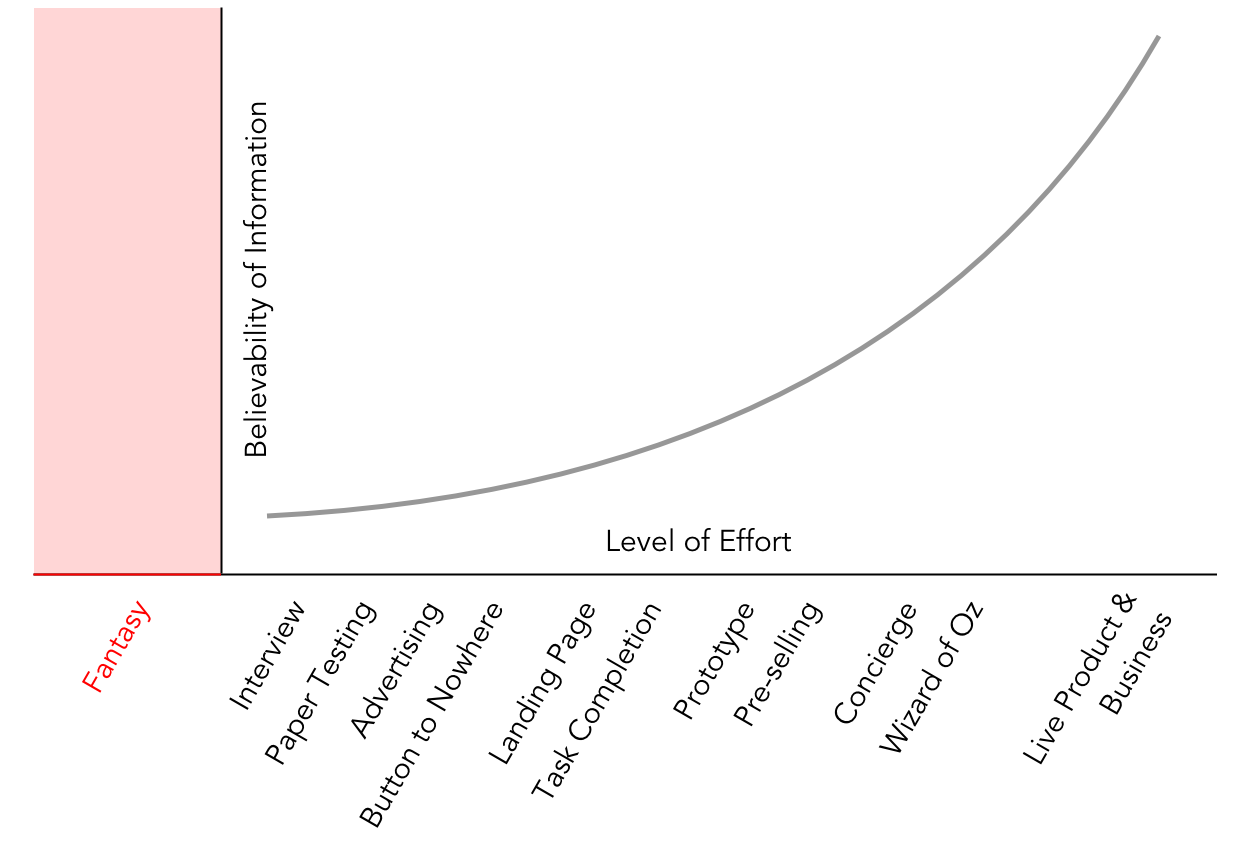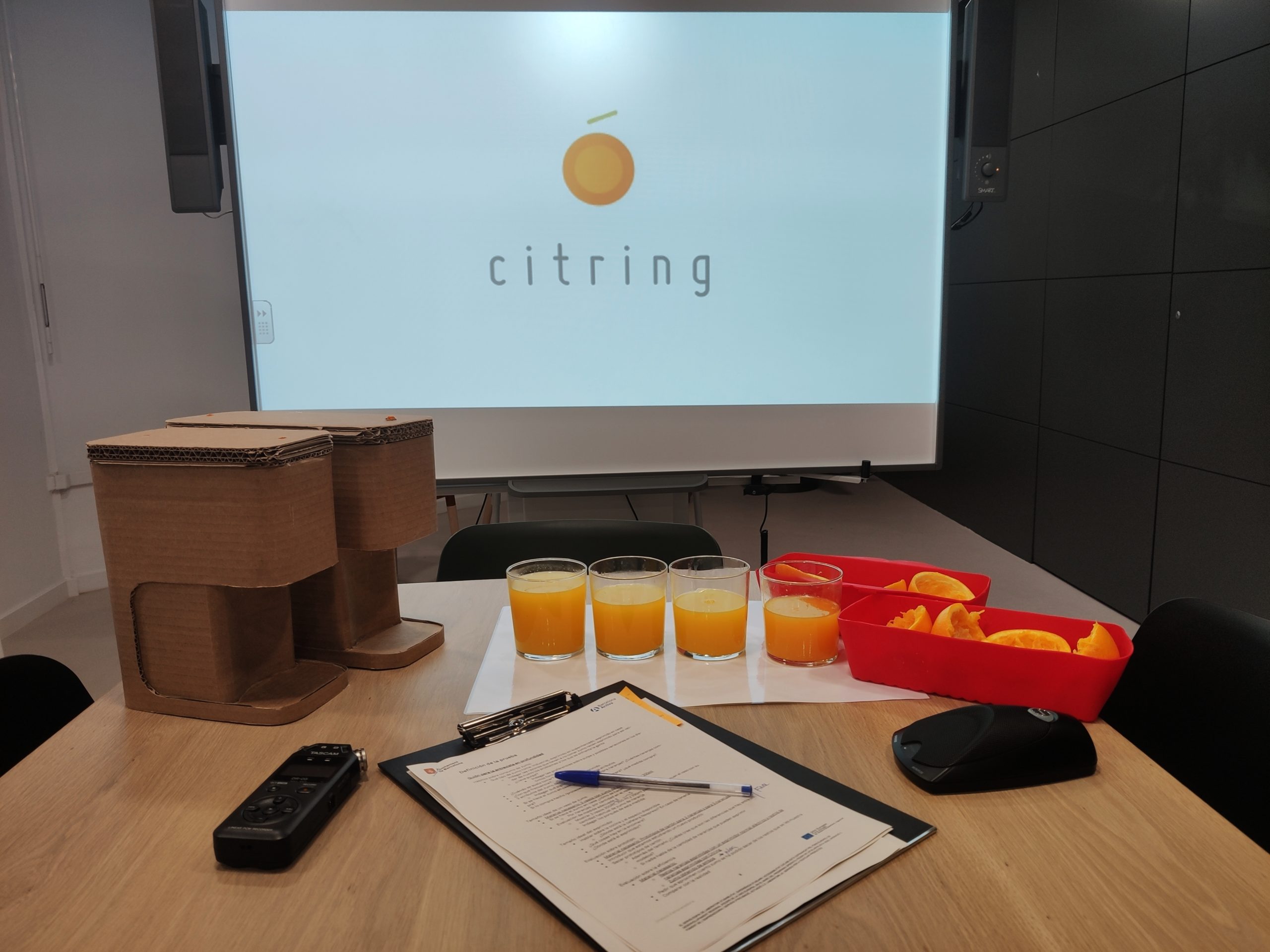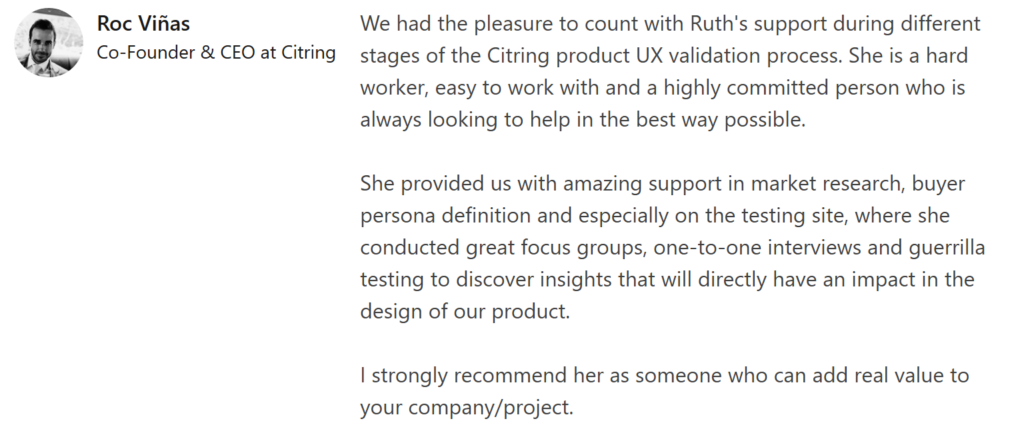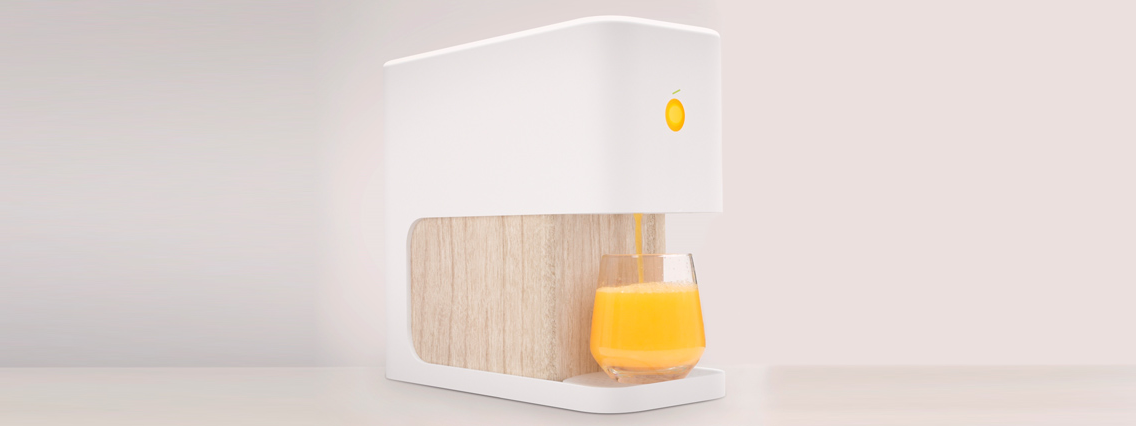Sometimes the term UX seems to be very close to web/app development, but, in fact, one can use the methodologies for any business.
In the daily rush, we no longer have time to make fresh orange juice every morning and Citring came to me with a purpose: disrupt the way we are making orange juice at home, and in every disruptive product, UX makes special sense.
I have to say, most of my work with Citring is NDA protected because the device is being developed as I am writing this case study. But I’m trying to communicate the experience without the detail.
The focus of my work with Citring has been:
- Help them to introduce UX methodologies in their daily work.
- Conduct in-depth interviews with potential customers.
Lean UX, Guerrilla, and Interviews.
To carry out the first point, we have heavily worked on Lean UX and Guerilla Testing.
Once we have been able to validate the initial hypotheses, we have recruited people who match the Personas, and we have spent some time talking to them.
Step 1. Juice consumer hunters: let’s take the street
After going through sessions of developing Personas and building business hypotheses, it was time to look for validation.
In a production product process, the times are very tight, so Guerilla Testing happens to be very useful to get quick insights that allow the team to move fast to the next step once having found evidence.
So, where are the people who drink orange juice but don’t squeeze it at home? The answer to the question was clear: buying it in supermarkets or drinking it during their morning coffee break.
Where are the people who drink orange juice but don’t squeeze it at home? Buying it in supermarkets or drinking it during their morning coffee break.
The strategy to carry out Guerrilla was more or less the following
- Write a script, so everyone involved was aligned.
- Get to those places: supermarkets and bars.
- Observe and look for the people we were interested in.
- Gently approach.
- Ask them a few questions that will allow us to learn, validate the hypotheses and continue the journey.
All at little cost, in the purest Giff Constable style.

During the Guerrilla experiment, the company talked to 60 different people in bars and supermarkets.
Once the process was completed, the start-up had learned many things and, above all, validated many of the initial hypotheses regarding whom the potential users were and what were their main pain-points when making orange juice.
Step 2. Cardboard prototypes, a demo video, and people’s reactions
Once the initial hypoteses were validated doing Guerrilla, the company made a bunch of insights about Citring’s potential users, especially who they were and what they worried about.
But while doing Guerrilla, some questions kept unanswered and more research was required. The company needed to take some product decisions and to find the evidence, we ran an experiment a little more sophisticated than a casual conversation.
So, we decided to recruit some people who matched the Personas and
- Learn more about shopping habits and orange juice consuming.
- Understand preferences about orange juice texture.
- Collect first impressions about the product.
- Determine which product size worked better for them.
- Observe people’s reactions to the appliance efficiency.
Based on these objectives, we agreed on an interview plan. Once it was done, the company was in charge of recruiting the participants and I conducted personal interviews.
In order to get better insights and make easier for people to put themselves in context, the company created a pair of cardboard prototypes and a video demo to use them during the interviews.

A total of 6 people were interviewed, mainly women (4 women and 2 men), since the cultural background, nowadays, still continues to have a lot of weight when buying home appliances and making alimentary decisions.
Research results at this point.
As I said at the beginning of the case study, I cannot make the study findings public. However, broadly speaking, I can comment that the product was well-received, the company obtained evidence to continue with the manufacturing process, and at the same time, we discovered some doubts that people have about the operation of the product that should be addressed in the communication strategy when the product is released.
The next milestone, a usability test, will be carried out once the company has completed its functional prototype.
Testimonial

